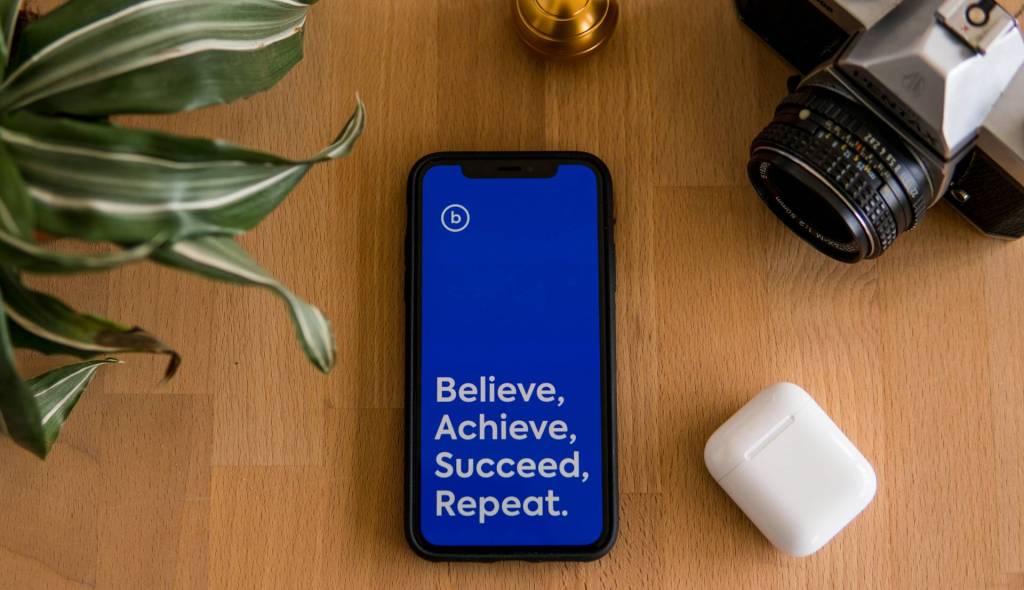Surprisingly, people love or hate their jobs based on their interaction with their immediate supervisor. An amazing boss is also a great leader and has the ability to connect employees to an organization. The boss is likened to an umbilical cord for the employee to the organization. If that cord is damaged, the employees will eventually leave. An amazing boss helps employees develop a strong sense of self-esteem, gives employees the tools they need to succeed and gives people the space to show their talents.
Great supervisors or bosses share many of the same character traits. They gain loyal followers because they focus on the big picture and the needs of their team. They can dream big, allow others to dream big with them and help their subordinates get things done. They cultivate an atmosphere that’s fun to work in. Great bosses invest in their employees’ physical and emotional well-being and reward and promote those who excel at what they do.
If your goal is to build a great company, one that attracts the best talent and retains them, then it would make sense to know how to become an amazing boss. A great supervisor creates a team of inspired, highly engaged employees who become stars in every position and help each other to be great. Your company will be more likely to thrive (assuming you offer a product or service that’s in demand) because people will become inspired to follow you. The next thing a great boss needs to do is to build trust.
Build trust
Building trust doesn’t happen overnight–but there are important steps leaders can take to foster a more trusting climate that will positively impact business results. So what are the steps to building trust?
3 important steps to building trust:
1. Involve people in decisions that directly affect them
When people are involved in a decision, even if they don’t make the final call, they are more likely to support the decision. This means bringing people in before you’ve made the decision. If you’ve already made the decision, and you’re not open to changing your mind, don’t go through the motions of bringing people into the process. You won’t strengthen your connection with those people. In fact, people will feel ‘conned.’ On the other hand, treating people as capable decision makers shows you trust them to be part of good decisions. They’ll be more inclined to trust you when you treat them as equals. This shows respect and ultimately giving respect results in gaining respect.
2. Be transparent and consistent in your actions
We tend to focus on outcomes and ignore the process. Understanding how a decision was made, and the thought process behind that decision, can have a huge impact on how people feel about the decision. In one study, employees who understood how their performance bonus was determined were more satisfied than employees who received more money, but didn’t know how the bonus had been determined. If you are transparent and consistent, people will see your motives and learn to rely on you.
3. Foster relationships
The connection between employees and managers make a huge difference in the degree of engagement and involvement people will feel. If people know, understand and care about what matters to them, they’ll trust you to act in ways that align with their interests. Showing genuine concern for your employees perpetuates a positive cycle of caring in the office. What matters to you will also matter to them more when they see you are a genuine ally.
Give public recognition of others accomplishments
Forbes recent research noted that organizations that give regular thanks to their employees far out perform those that don’t. Those who recognize the importance of recognition and appreciation as integral components of a winning strategic reward system tend to attract top talent and retain them.
Not surprisingly, another part of joy comes from a simple pat on the back. Globoforce, a software provider of social-recognition solutions, said 82% of employees it polled said that receiving recognition makes them more satisfied with their jobs. “A workplace is far likelier to be a happy place when policies are in place to ensure that people regularly get acknowledgement and praise for a job well done, and where people feel that their happiness at work matters to their employers,” says Gretchen Rubin, author of the best-selling Happiness Project.
Recent gallop poll research shows that if your boss ignores you, your level of disengagement goes up by 45%. If your boss criticizes you, it goes down to 25%, because you’d rather be criticized than ignored. If your boss notices your strengths, your rate of disengagement goes down to less than 1%. How we treat people has huge economic implications and yet many leaders totally ignore this dynamic in the corporate world. One of the fastest ways to change a business is to find ways to engage people emotionally.
Make people feel they belong
Implement peer to peer recognition, not only top down
Recognition from leaders has less of an impact than you may think. While HR managers believe this is a key criteria for success, employees told Forbes researchers that they feel much better when they are recognized by their peers. Why is this? Peers know what you’re doing on a day to day basis, so when they “thank you” for your efforts the impact is much more meaningful. Top-down recognition is often viewed as political and it rarely reaches the “quiet but critical high-performers” in the company.
Frequently say, ‘How can I help you?’
Asking how you can help an employee engenders a connection.
Employees want more than just a paycheck. They want to work with and for people they respect and admire, and with and for people who respect and admire them.
That’s why a kind word, a quick discussion about family, an informal conversation to ask if an employee needs any help, make more of an impact than any formal meeting. A true sense of connection is created when there is a personal connection. That’s why exceptional bosses show they see and appreciate the person, not just the worker.
Show employees that there is a chance for a meaningful future
Every job should have the potential to lead to greater things. Exceptional bosses take the time to develop employees for the job they someday hope to land, even if that job is with another company. LinkedIn does this by offering career paths within the firm and actually asks new hires what they would do if they were to leave the company? The point is, the best way to learn what an employee hopes to do someday is to ask them. Employees will only care about your business after you first show you care about them. One of the best ways is to show that while you certainly have hopes for your company’s future, you also have hopes for your employees’ futures.
Create a safe environment to be creative; one where employees feel they express views, no finger-pointing
LinkedIn offers an exceptional model for how to develop a work environment that encourages creativity. Employees there get dedicated time to work on special projects. For example, they offer employees free time to work on projects outside their normal daily grind. For LinkedIn, these are called “inDays” and they happen one Friday a month.
LinkedIn’s spin is to give each one of them a different theme. For instance in July, the theme was “LinkedIn for Good” where LinkedIn employees worked on 54 projects that got them out volunteering in their communities.
Employees also get inspired by world-class speakers.
YouTube/Linked LinkedIn is also known for its Speaker Series, which it makes available to the everyone via YouTube.
Every month, LinkedIn hosts up to three of these lectures. Past speakers included Seth Meyers (head writer at NBC’s Saturday Night Live), Fred Kofman (the author of the book, Conscious Business), new age guru Deepak Chopra, and Martin Luther King III. LinkedIn employees get $5,000 per year for professional education. They also offer online training tools like “LearnIn” which offers all sorts of courses, and “ManageIn” which is a months-long manager trainee program. Employees get to pitch and run startup-like projects.
Another thing LinkedIn does to inspire creativity is something called “Incubator.” Once a quarter, any team of LinkedIn employees can pitch an idea to executives. If the execs like the idea, the team gets to spend up to three months of dedicated time working with a mentor to develop the idea.
That’s how UI designer Hans van de Bruggen got to work on on his project called “Hopscotch” which gives step-by-step tours of new features on LinkedIn. It was launched in August when LinkedIn introduced a new search tool.
Foster Leadership
The top companies for leadership don’t just talk about talent development. They are far more likely than other companies to have formal leadership training programs in place and to offer mentoring by senior managers. Hay Group research shows that top leadership companies are more collaborative and more encouraging of outside learning, and they more often reward employees for novel business ideas than other organizations.
Top companies take a holistic approach to leadership, employing strategic practices aimed at developing and motivating up and down the organization. The Hay Group report says that 73% of what it considers the Top 20 leadership companies make development opportunities available to every employee, compared with 47% of other companies.
The best companies for leadership “recognize that many of the skills once required solely for senior leadership roles – high levels of emotional intelligence, commitment to continuous learning, analytical thinking – are now critical at every level of the organization,” Ruth Malloy, global managing director of Hay Group’s Leadership and Talent practice, said in a news release.
Proctor & Gamble, Microsoft, G.E., Coca-Cola, and Unilver were ranked the top 5 companies for leadership.
Have ‘Soul’
Deepak Chopra, the new age guru, business professor and best-selling author of The Soul of Leadership, says that the leader is the symbolic soul of a group consciousness. That group could be a family, a political party, or a business. When you as a person represent the dreams, longings and aspirations for those you care for, you are in a sense in touch with their soulful existence. Chopra suggests that managers get in touch with their core consiousness so as to develop a spiritual bond between them and their employees. He says, ‘Every leader has the opportunity to help make their employees whole.’ And in doing so will automatically increase employee engagement. He suggests you can do this by incorporating these six behaviors:
Listen in a way that shows you care and appreciate people. This creates a bond with your employees.
Be Aware: Understand people’s needs and find ways to meet their needs. This gives others hope, compassion, trust and stability at work.
Empower: Use their strengths to empower people. Good leaders nurture employees strengths and understand their values. Help them live up to their values, and use their talents. This will boost their self-esteem and empower them to achieve.
Dare to Dream a new reality and do it: Help employees stretch themselves to achieve goals beyond their immediate responsibilities. Then set limits on their time frames for achieving these bigger goals so they happen.
Take Responsibility
Invest in your employees health by giving them the time and a place to exercise every day. This helps energize them and allows them an outlet to release stress.
Synchronicity
Great leaders realize that the nature of the universe is connected to everything else. They inspire others to act like owners and pursue excellence.
Ask How Can I Help?
An employee’s relationship with his or her direct manager is the most critical single factor in employee engagement. If your managers are doing their job (assuming of course you offer products or services that people want and need), you’ll have a productive work force. Employee engagement is strengthened when employees are asked what matters to them, and are offered training to achieve their goals. Engaged employees are happier and more productive. Disengaged employees are frustrated and more disruptive.
Oshkosh Corporation offers lots of training classes so that employees can get promoted quickly. Trainings can be instructor-led, web-based or video-based, and the company also offers tuition reimbursement for advanced degrees.
They list job opportunities specifically for internal candidates, and host a Rotational Engineer Program that gives engineers the ability to learn multiple skills in a variety of different units.
They also encourage employees to continue their educations, and offer tuition reimbursement. Hess, a leading independent energy company shows loyalty to its employees through extensive training and advancement opportunities. They offer recent college graduates and highly motivated students the chance to take on meaningful roles and make a difference right away. Every Hess employee is encouraged to continually learn and develop. New graduates participate in formal training and development programs designed to take their career to the next level. The Hess Global Professional Development Program is a two-year program for all Hess university graduate hires. The program helps entry-level employees expand their understanding of their company and build their baseline professional skills – providing a solid foundation for successful careers.
Offer meaningful work
Managers who delegate work that is challenging and interesting are known to be more successful at engaging employees.
Another way to reduce employee apathy and disengagement is to cultivate a culture of mindfulness and meaning, according to Jennifer Aaker, General Atlantic Professor of Marketing at Stanford Graduate School of Business. “New research shows there is a strong correlation between happiness and meaning–in fact, having a meaningful impact on the world around you is actually a better predictor of happiness than many other things you think will make you happy,” Aaker says. “When we can cultivate mindfulness and meaning in all that we do, including our work, we have the opportunity to influence not only our own well-being, but also the well-being of our family, friends, coworkers, and wider community.”
Provides space for both social and private time
The most exceptional managers recognize that a happy employee is a healthy employee so they encourage their employees to take time to improve their physical health and provide services that could reduce stress in their daily lives. For instance, Campbell Soup offers childcare. Cisco, LinkedIn and Hershey Foods Corp. have their own fitness centers for employees. Hershey extends membership to family members and dependents. Google has a bowling alley and bocce courts; Boeing gives its employees 12 paid holidays and a winter recess between Christmas and New Year’s Day; Johnson & Johnson offers private concierge services to its employees; Mattel, Inc. allows its employees to take paid time off for their kids school field trips. Employees at these firms give high ranks to their bosses.
Great leaders combat complacency and reduce attrition by paying close attention to the needs of their employees. They don’t just talk about improving employee moral, they actually take action to understand their employees’ needs and create ways to help them live a more enriched and purposeful life. These exceptional leaders consider people’s emotional, physical and even spiritual well-being (at least in a general sense of helping them to see their own value and encouraging each person to develop his strengths).
Over time, investing in workers pay off; as what’s good for individuals is also good for business and the effect is greater engagement, motivation and increased productivity.












